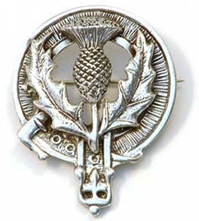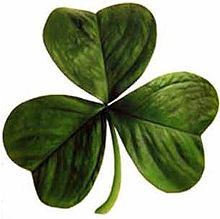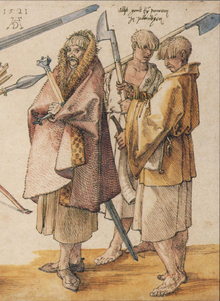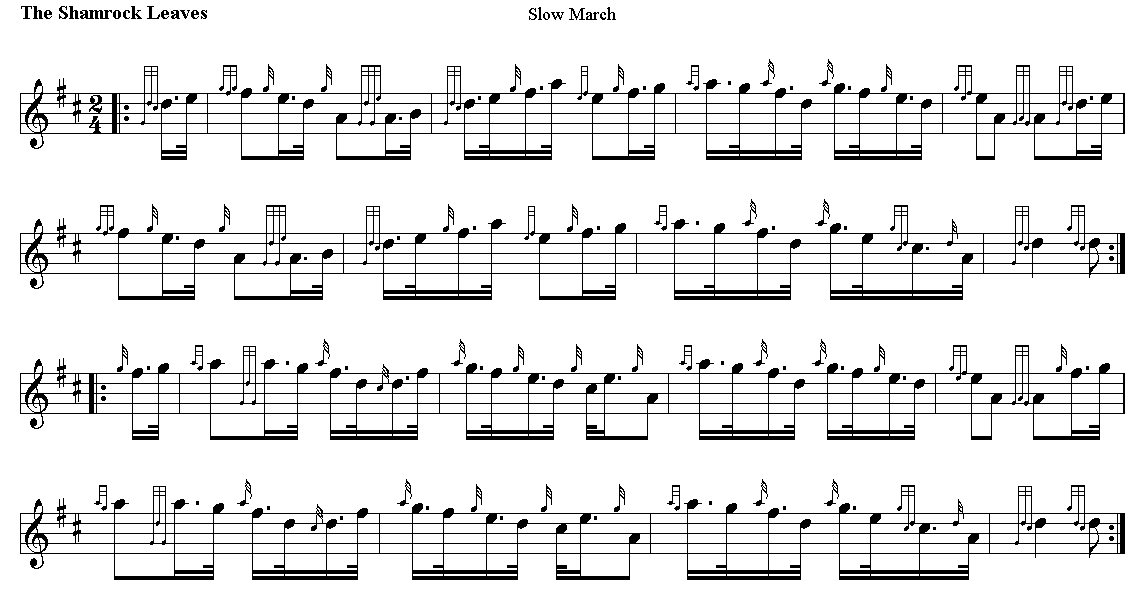 |
||

Best viewed in
|
The shamrock refers to the young sprigs of clover or trefoil. It is known as a symbol of Ireland, with St. Patrick having used it as a metaphor for the Christian Trinity, according to legend. The name shamrock is derived from Irish seamróg, which is the diminutive version of the Irish word for clover (seamair) meaning simply "little clover" or "young clover".
The word shamrock derives from seamair óg or young clover, and references to semair or clover appear in early Irish literature, generally as a description of a flowering clovered plain. The first mention of shamrock in the English language occurs in 1571 in the work of the English Elizabethan scholar Edmund Campion. In his work Boke of the Histories of Irelande, Campion describes the habits of the 'wild Irish' and states that the Irish ate shamrock "Shamrotes, watercresses, rootes, and other herbes they feed upon". By the end of the sixteenth century the shamrock had become known to English writers as a plant particularly associated with the Irish, but only with a confused notion that the shamrock was a plant eaten by them. Traditionally, shamrock is said to have been used by Saint Patrick to illustrate the Christian doctrine of the Trinity when Christianizing Ireland in the 5th century. The first real evidence of a link between St. Patrick and the shamrock appears in 1675 on the St. Patrick's Coppers or Halpennies. These appear to show a figure of St. Patrick preaching to a crowd while holding a shamrock, presumably to explain the doctrine of the Holy Trinity. The first written mention of the link does not appear until 1681, in the account of Thomas Dineley, an English traveller to Ireland. Dineley writes:
The 17th day of March yeerly is St Patricks, an immoveable feast, when ye Irish of all stations and condicions were crosses in their hatts, some of pinns, some of green ribbon, and the vulgar superstitiously wear shamroges, 3 leav'd grass, which they likewise eat (they say) to cause a sweet breath.
There is nothing in Dineley's account of the legend of St. Patrick using the shamrock to teach the mystery of the Holy Trinity, and this story does not appear in writing anywhere until a 1726 work by the botanist Caleb Threlkeld.
As St. Patrick is Ireland's patron saint, shamrock has been used as a symbol of Ireland since the 18th century, in a similar way to how a rose is used for England, thistle for Scotland and leek for Wales. The shamrock first began to change from a symbol purely associated with St. Patrick to an Irish national symbol when it was taken up as an emblem by rival militias, during the turbulent politics of the late eighteenth century. On one side were the Volunteers (also known as the Irish Volunteers), who were local militias in late 18th century Ireland, raised to defend Ireland from the threat of French and Spanish invasion when regular British soldiers were withdrawn from Ireland to fight during the American Revolutionary War. On the other side were revolutionary nationalist groups, such as the United Irishmen.
Among the Volunteers, examples of the use of the shamrock include its appearance on the guidon of the Royal Glin Hussars formed in July 1779 by the Knight of Glin, and its appearance on the flags of the Limerick Volunteers, the Castle Ray Fencibles and the Braid Volunteers. The United Irishmen adopted green as their revolutionary color and wore green uniforms or ribbons in their hats, and the green concerned was often associated with the shamrock. The song The Wearing of the Green commemorated their exploits and various versions exist which mention the shamrock. The Erin go bragh flag was used as their standard and was often depicted accompanied by shamrocks and in 1799 a revolutionary journal entitled The Shamroc briefly appeared in which the aims of the rebellion were supported. Since the 1801 Act of Union between Britain and Ireland, the shamrock was incorporated into the Royal Coat of Arms of the United Kingdom, depicted growing from a single stem alongside the rose of England, and the thistle of Scotland to symbolize the unity of the three kingdoms.
|
|


